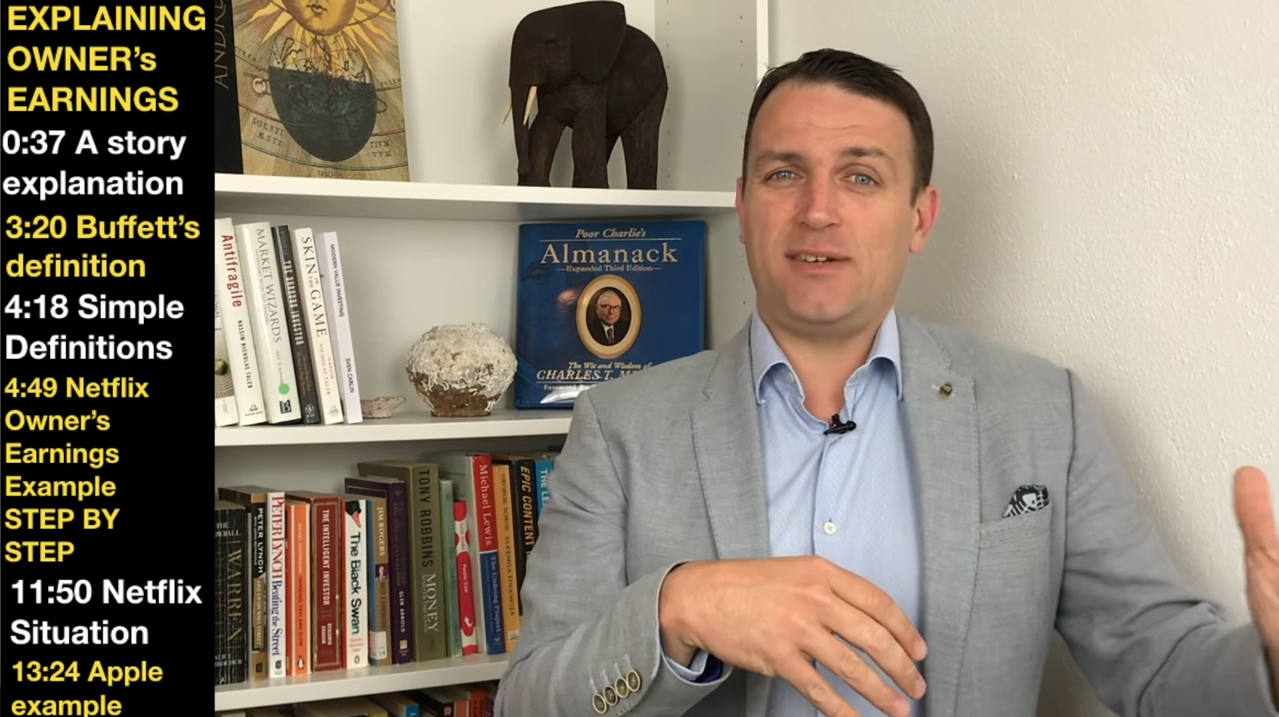Sven Carlin explains Buffett‘s owner’s earnings using Netflix and Apple as examples.
Buffett’s Owner’s Earnings Explained – Netflix and Apple Detailed Examples
Q3 2019 hedge fund letters, conferences and more
Transcript
Good day fellow investors. One of the best ways to analyse a business to see whether it is an investment for you or not, are to use Buffett's owners earnings and he explained his tactics when it comes to analysing businesses in his 1986 letter to shareholders, long time has passed since some accounting things have changed. But we are going to explain in details using Netflix and Apple as an example we're going to explain owners earnings and you'll see how whenever you analyse the company will never you look at potential investment.
This will come in handy. Before we start with the details of accounting, the best way to teach something is to use storytelling. And a great storey came to my mind while I was thinking about this video.
This weekend, we were in grants, which is sitting in Austria, and we were visiting just a small family vacation and we were sleeping at Hotel Park grants, which is a traditional hotel there, and it is owned and managed by the fourth generation.
So it is a family hotel, and little Polina was born in 2016. And she'll be the fifth generation managing the hotel. And when you have such a hotel, where the family is the owner, do they care about the valuation of the hotel, the stock price? When you look at businesses? Do they care about EBITDA? Do they care about their credit ratings by the ratings agency? Additionally, do they care about how the market will do in the next year? Will there be a recession or not?
Owners earnings vs EBITDA
Do they care about I don't know what else is going on with the trade war, or they just care about something else? Well, they care about what is the most amount of money they can take out from the hotel. After all the expenses are paid. That is what they really care about. And then when they have that available money they want to see, okay, can we invest in growth?
Can we do some changes in the hotel? Or can we just take it out, pay ourselves some dividends and live off the property that we own. Just one note here, if all the other hotels in grace decided to build a roof pool or something like that, then the hotel where we stayed, should build the same pool. And that's not growth, that is an investment just to keep its market share. And that's something very important when it comes to capital expenditures.
That will explain in a moment so when it comes to investing in businesses, you have to say okay, what can I take out from that business year over a year over year or reinvest in growth? So when it comes to businesses, you have to look okay, what can I take out from the business and then I am going to decide whether to reinvest in growth or pay myself a dividend though are owners earnings and that is what Buffett has always been focused on when invest, what are the owners earnings, alongside growth and other things, but let's focus on the accounting here.
Let's explain it in details. Let's define it and let's use Netflix and Apple, which are very, very interesting examples. To define owners earnings, Buffett defines owners earnings from the letter as following owners earnings.
Netflix and apple examples
These represent reported earnings plus depreciation, depletion, amortisation and certain other non cash charges such as company and items one and for less the average annual amount of capitalised expenditures for plant and equipment, etc. that the business requires to fully maintain its long term competitive position and its unit volume.
If the business requires additional working capital to maintain its competitive position and unit volume, increment also should be included in the average annual amount of capital expenditures in C. However, businesses following the leaf or inventory method usually do not require additional working capital if unit volume does not change.
So, this is a lot let me simplify the above and then define the account so owners earnings are reported earnings plus depreciation, depletion amortisation, other non cash charges, like impairments, for example, minus the average annual cap X amount that is needed to fully maintain the long term competitive position and unit volume of the business minus working capital changes. If those changes are negative, then minus and minus GIFs.
Plus, let's define reported earnings. You can find reported earnings at the bottom of the income statement earnings are what the company makes after deducting all the accounting expenses.






